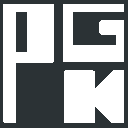A company may hire smart, creative people, write blog posts about openness, and toss around words like “trust” and “autonomy.” But behind the scenes, many of those same organizations create exactly the kind of environment where creativity dies slowly.
#creativity doesn’t need perks or slogans. It needs time, safety, and space to play. It needs confidence and humor. What it usually gets instead is urgency, noise, and culture-policed performance. Slack never stops. Everyone’s “aligned,” but no one’s saying anything real. Caustic humor is discouraged, but so is candor. What survives is polite vagueness.
The most damaging part of all this often comes from the top. Leadership doesn’t block ideas directly — they stall them with vibe-laced commentary and unspoken expectations. Decisions aren’t made, they’re implied. It’s rarely yes or no. It’s something that sounds thoughtful but leaves everyone guessing. And when you can’t tell if you’re allowed to act, you don’t.
That’s the trap: #leadership vagueness, dressed up as open-mindedness, kills momentum. A clear yes or no, even briefly explained, builds trust. It gives direction. The alternative isn’t openness — it’s slow paralysis.
Creativity isn’t just about breakthrough ideas. It’s how teams solve small problems, challenge stale habits, rethink broken systems. Without it, an organization might still function, but only in the past tense.
Eventually, people stop pushing. No risks. No breakthroughs. Just smart people self-policing their tone in rooms full of noise. Nothing technically wrong. Nothing truly alive either.
(Follow up to 6d41de2d-f6e5-49cc-aa65-237d9331e50c)
 Mugeveld
Mugeveld